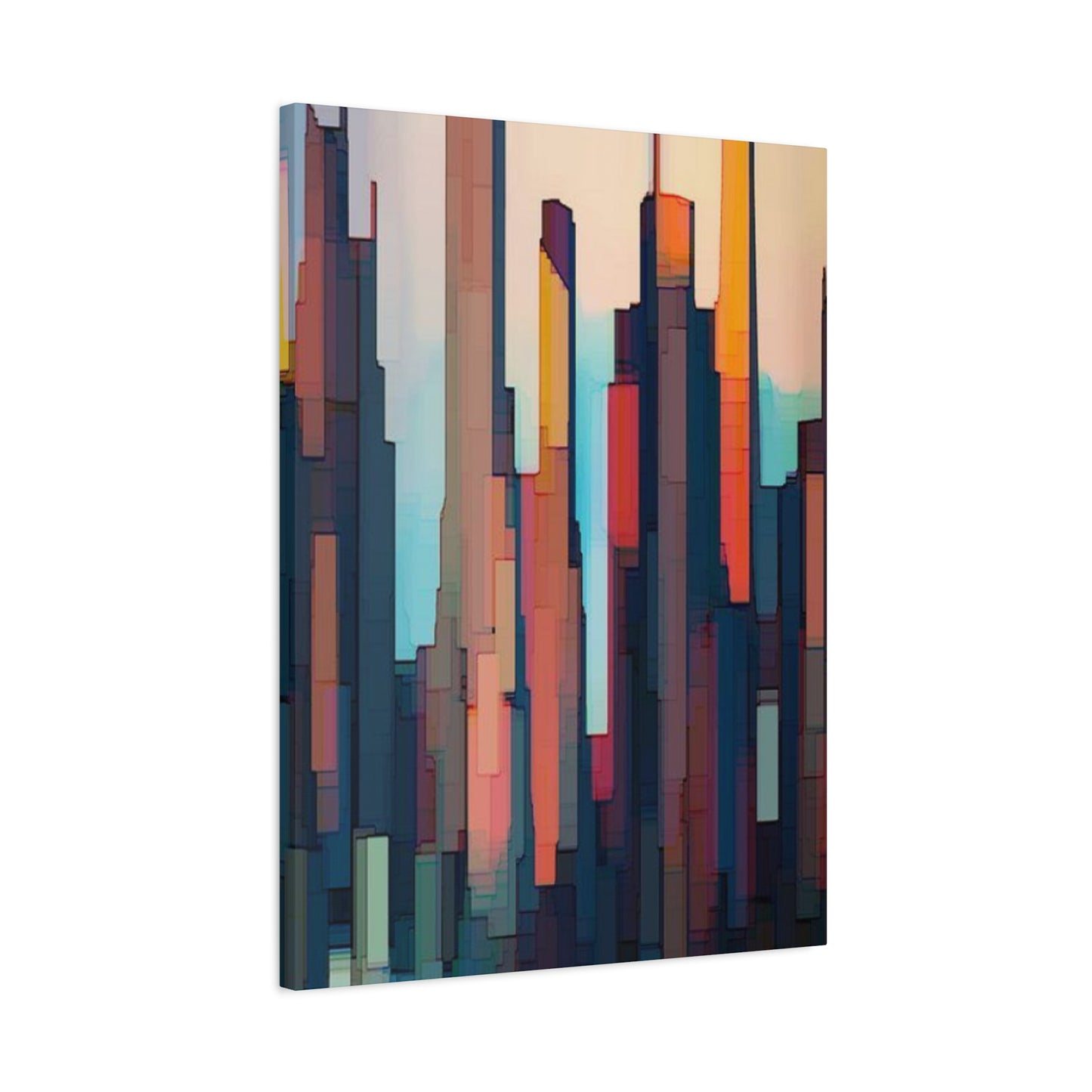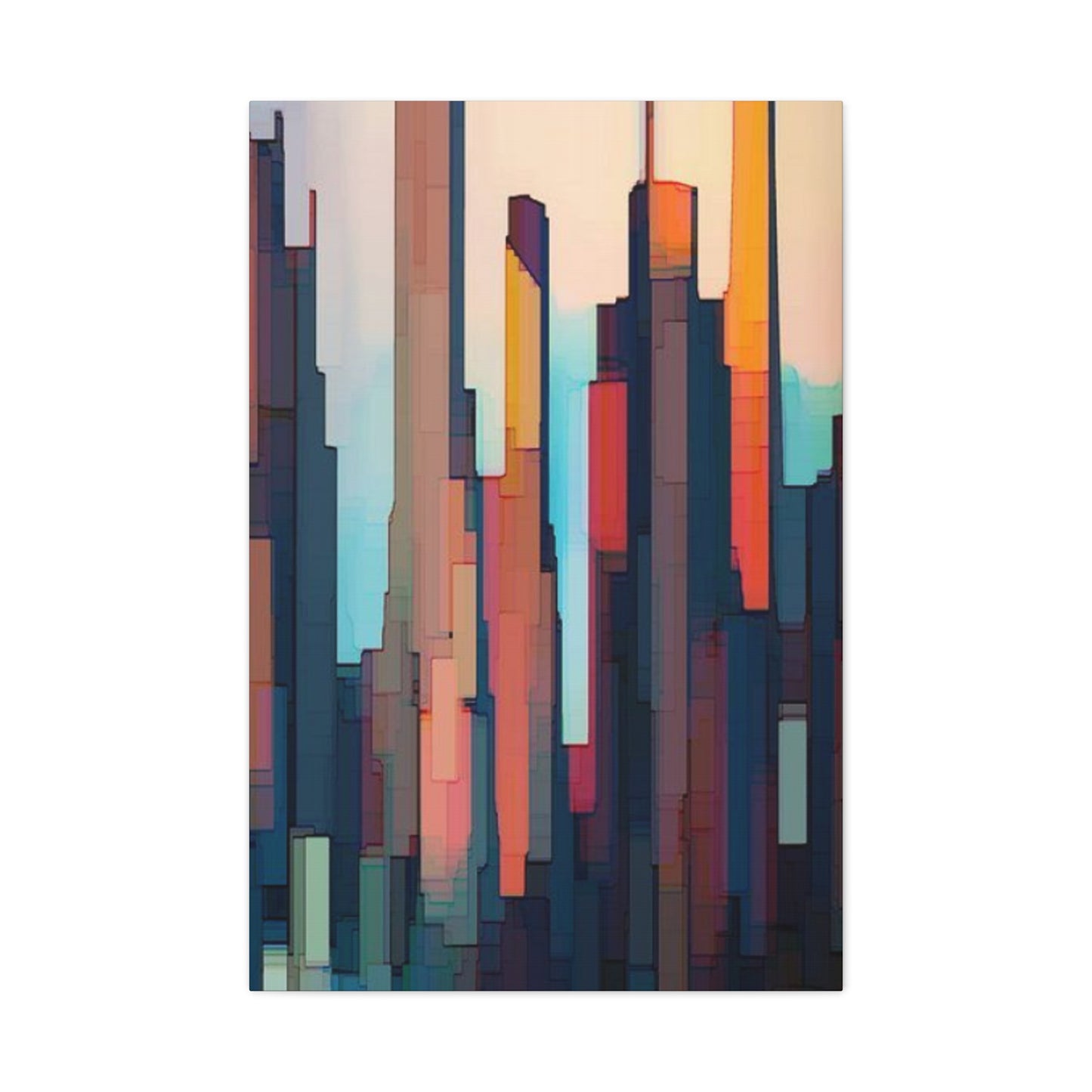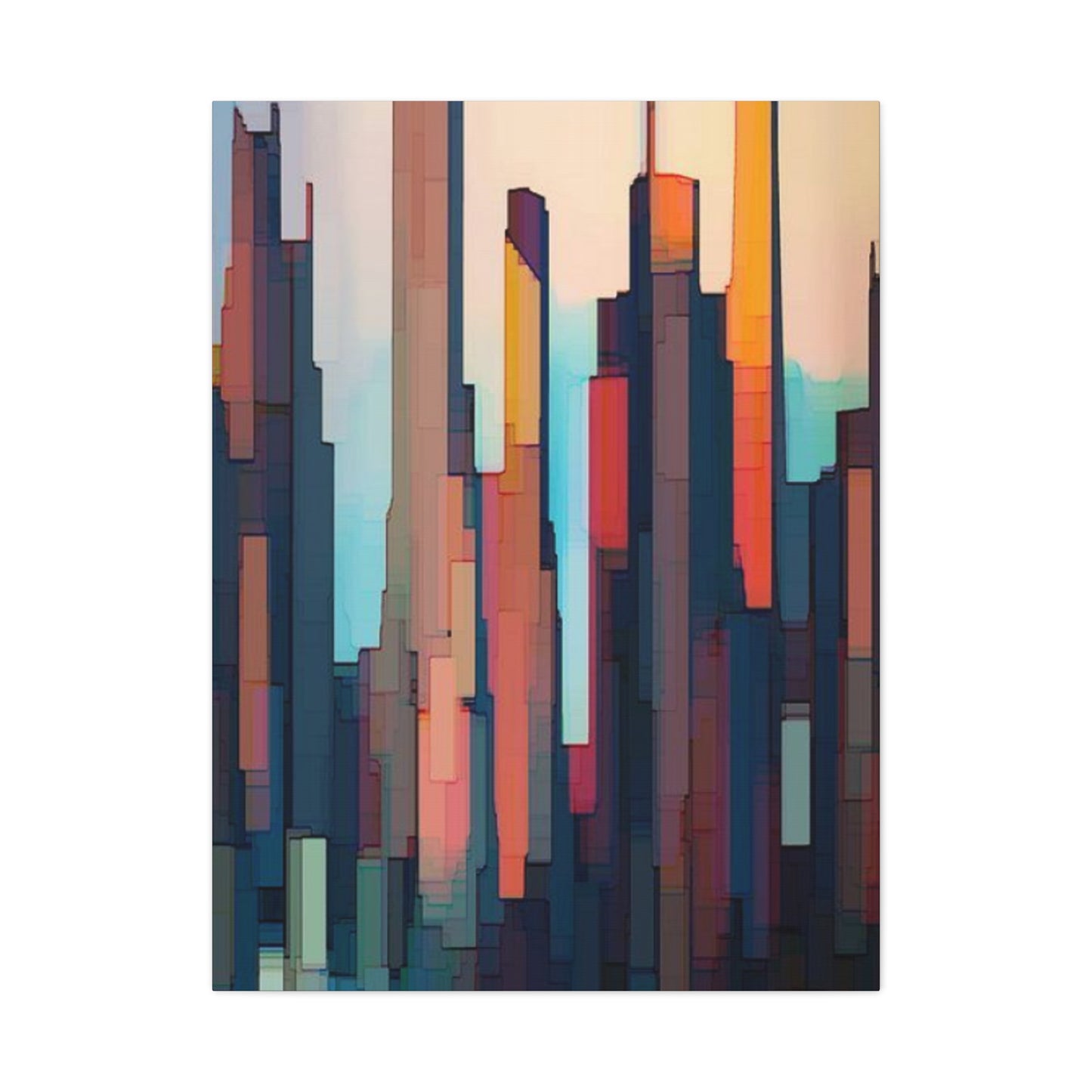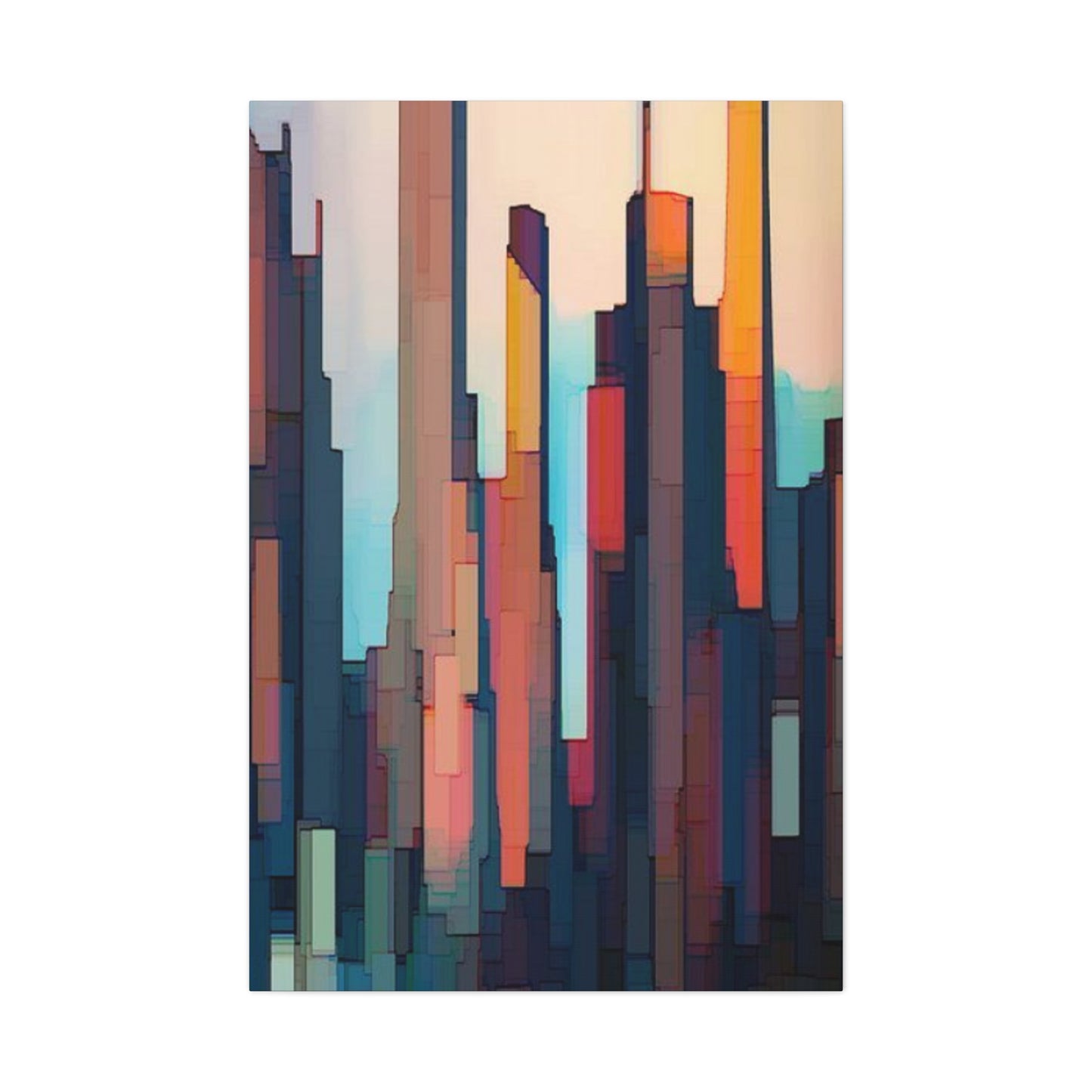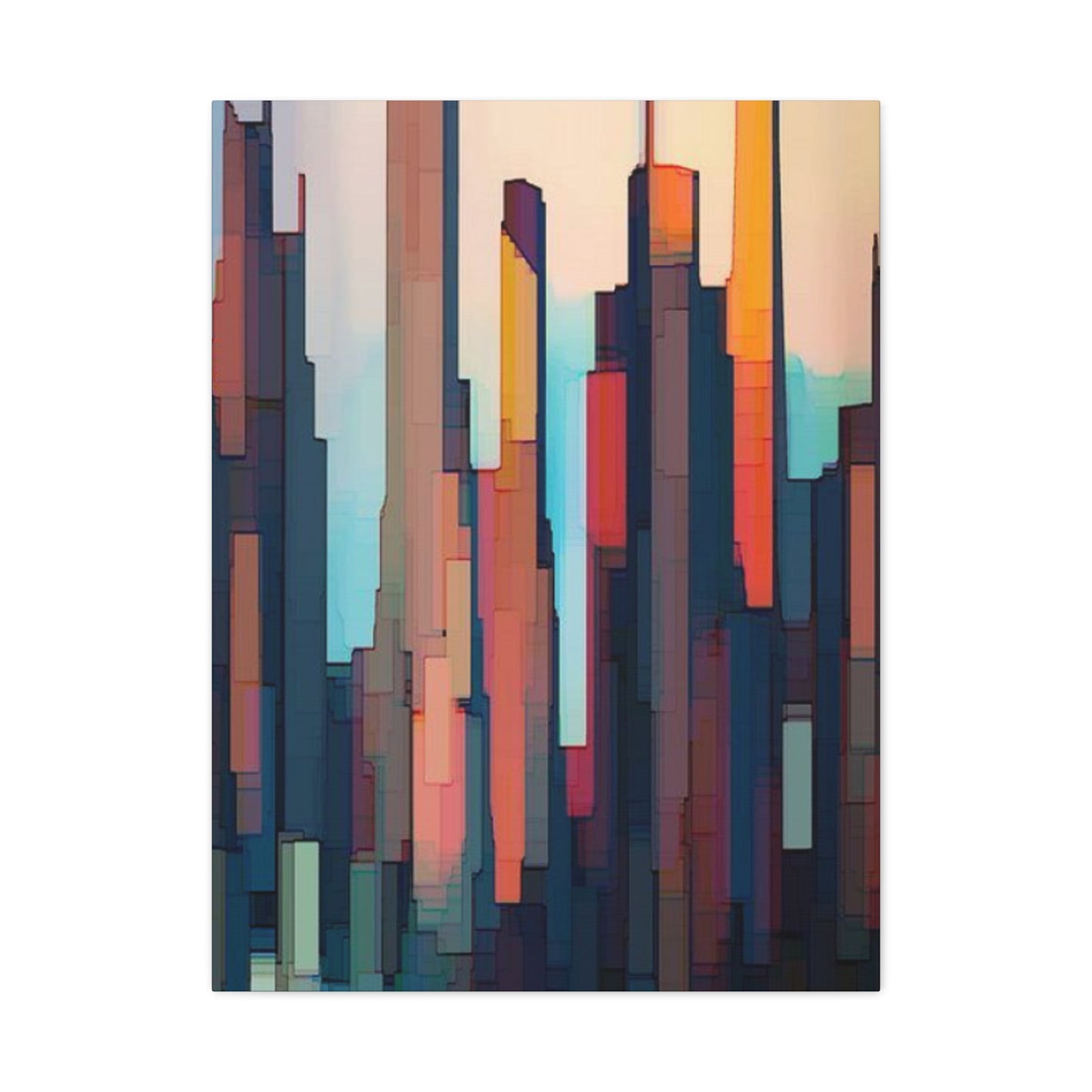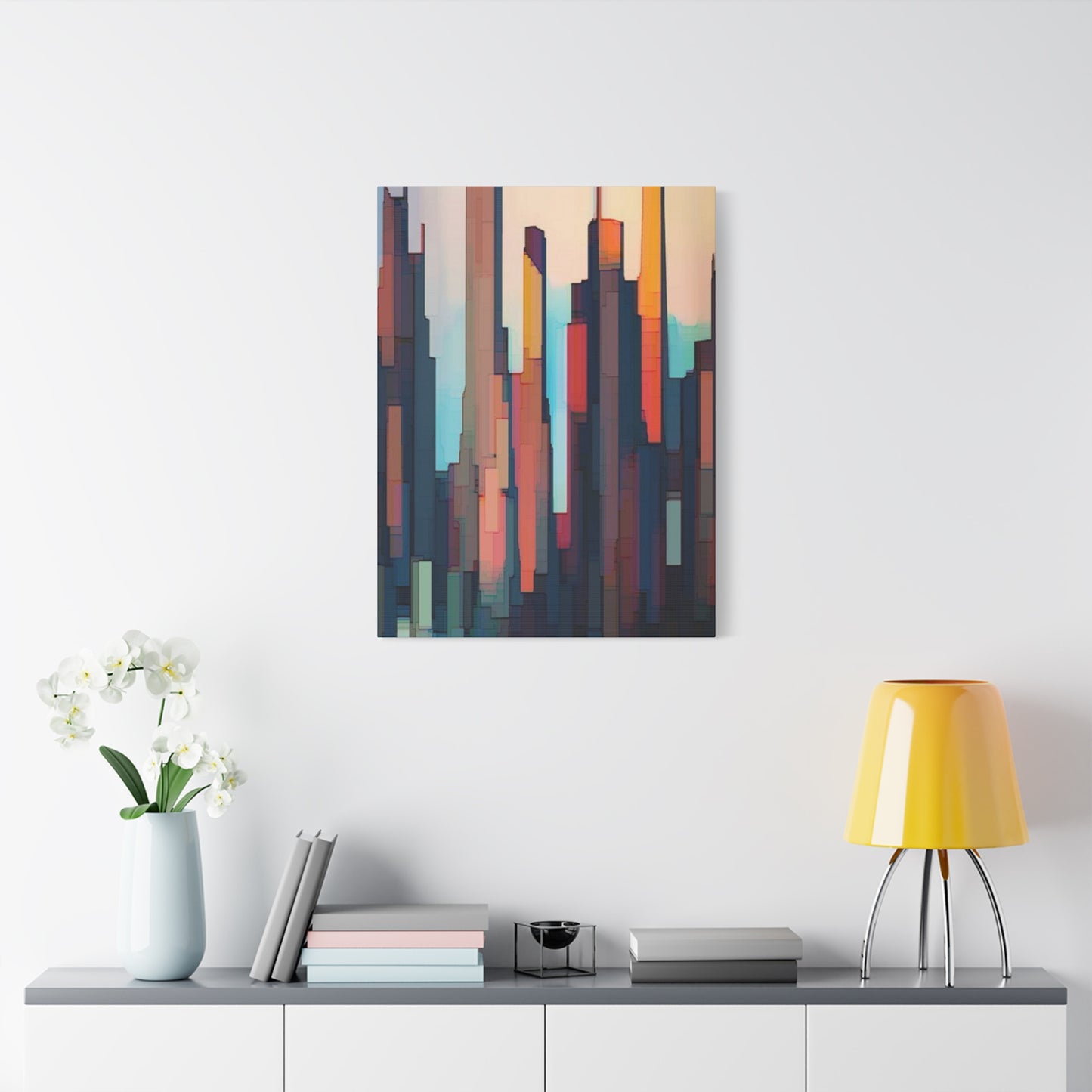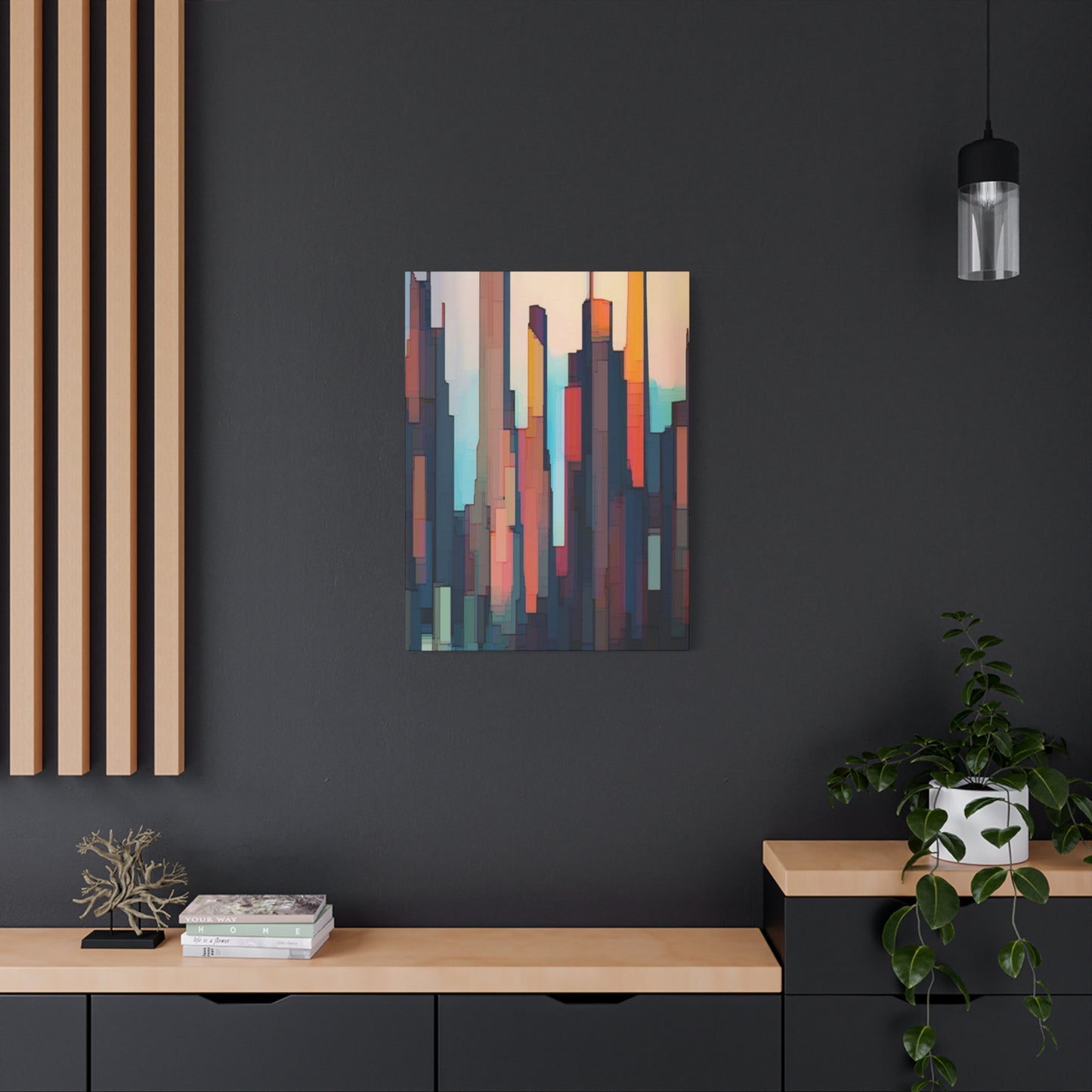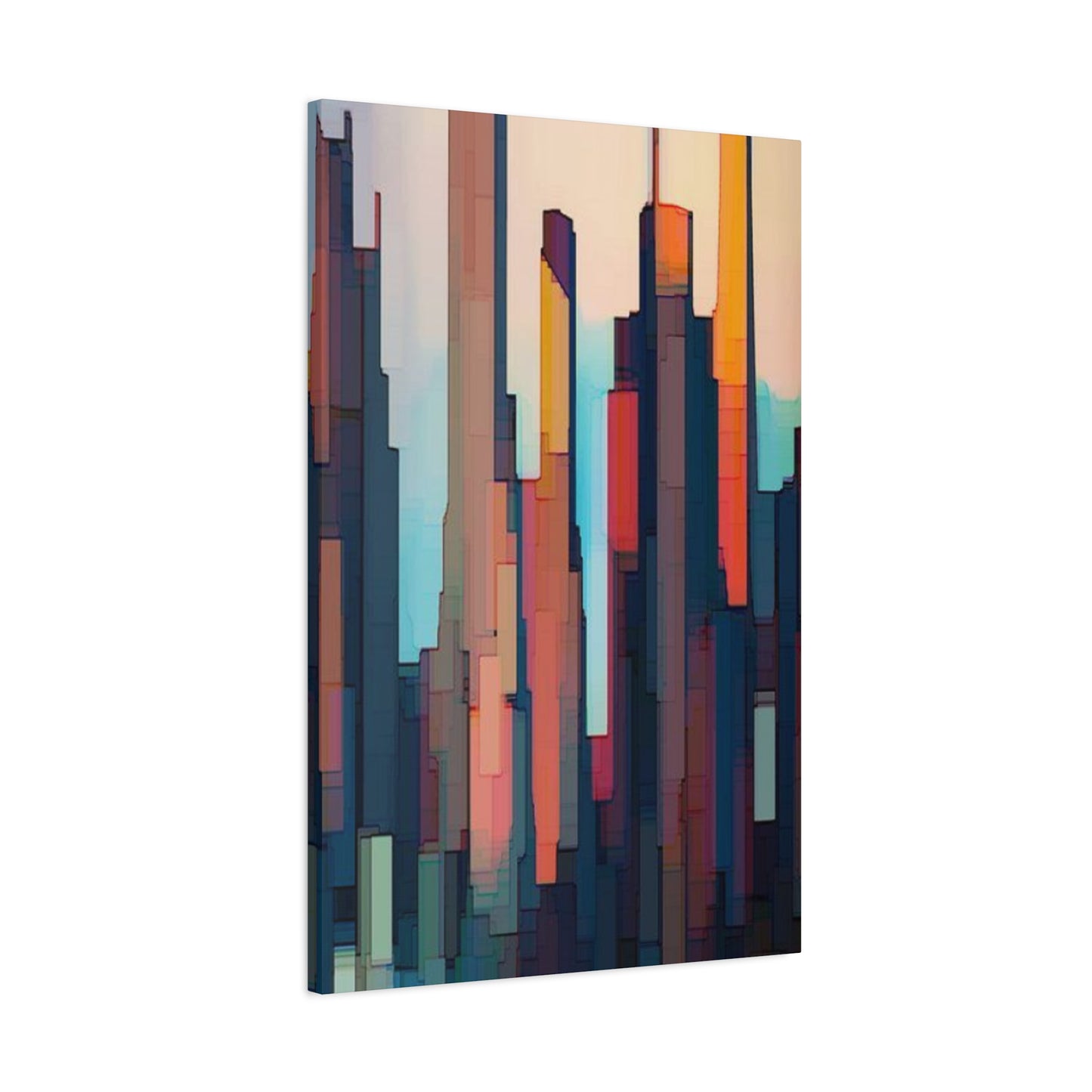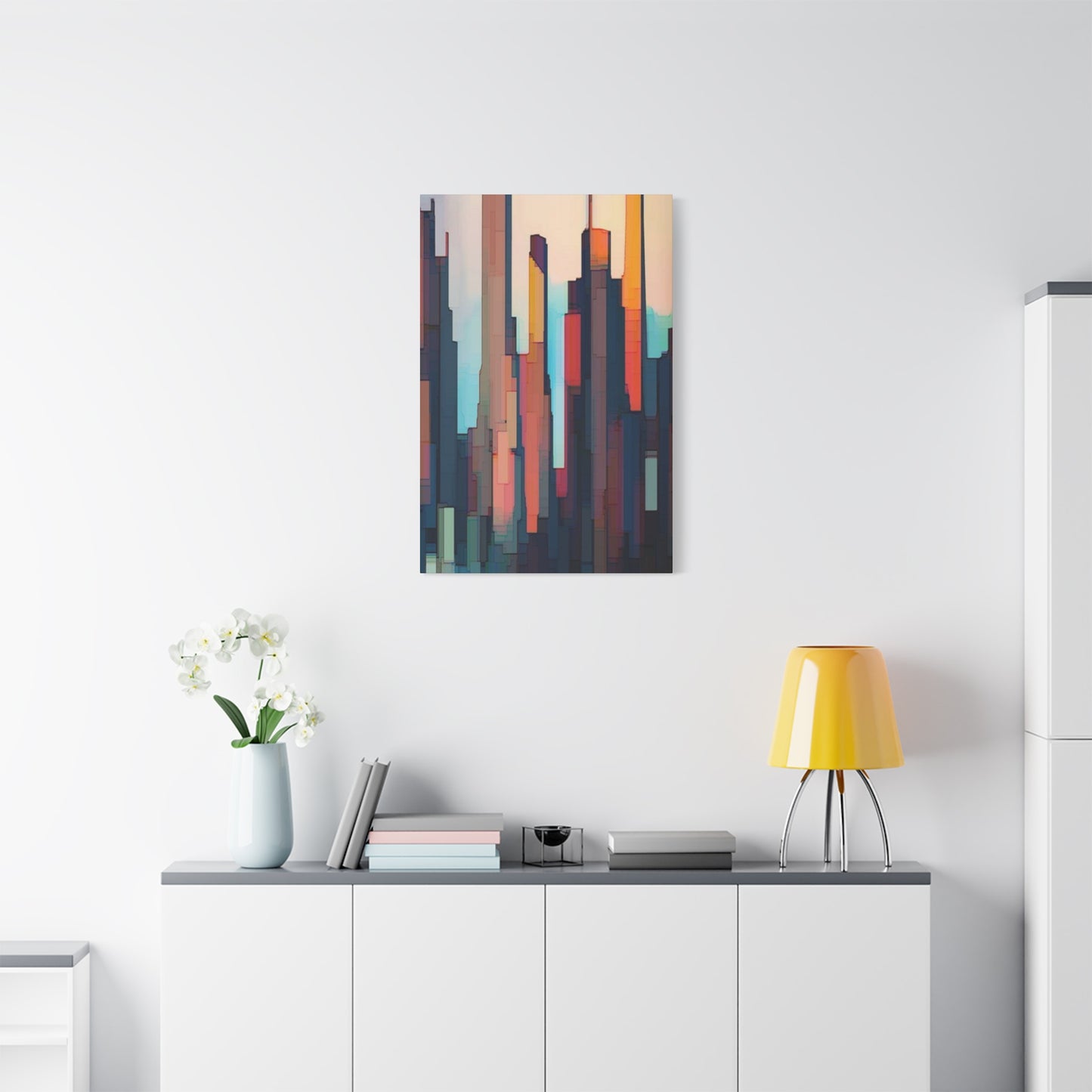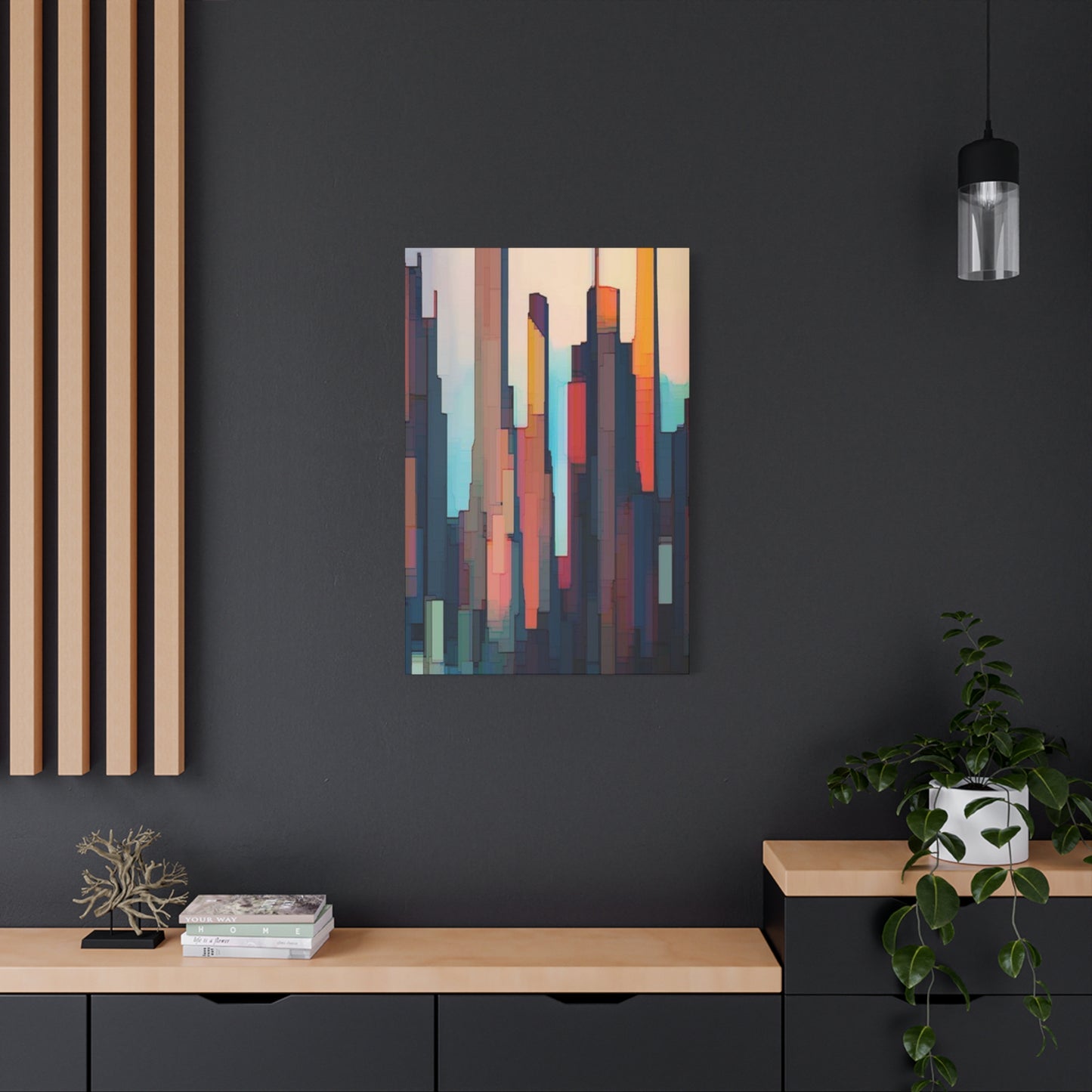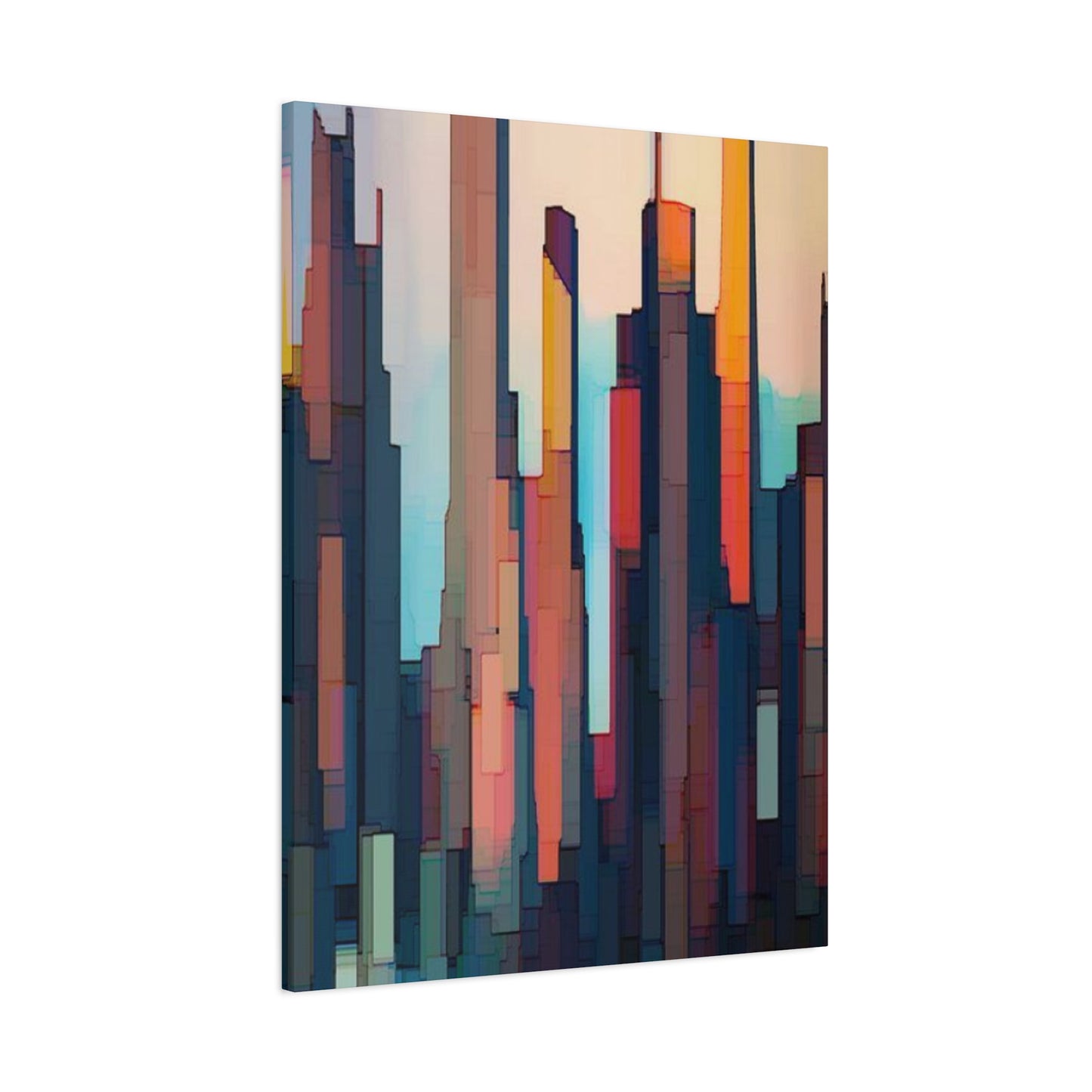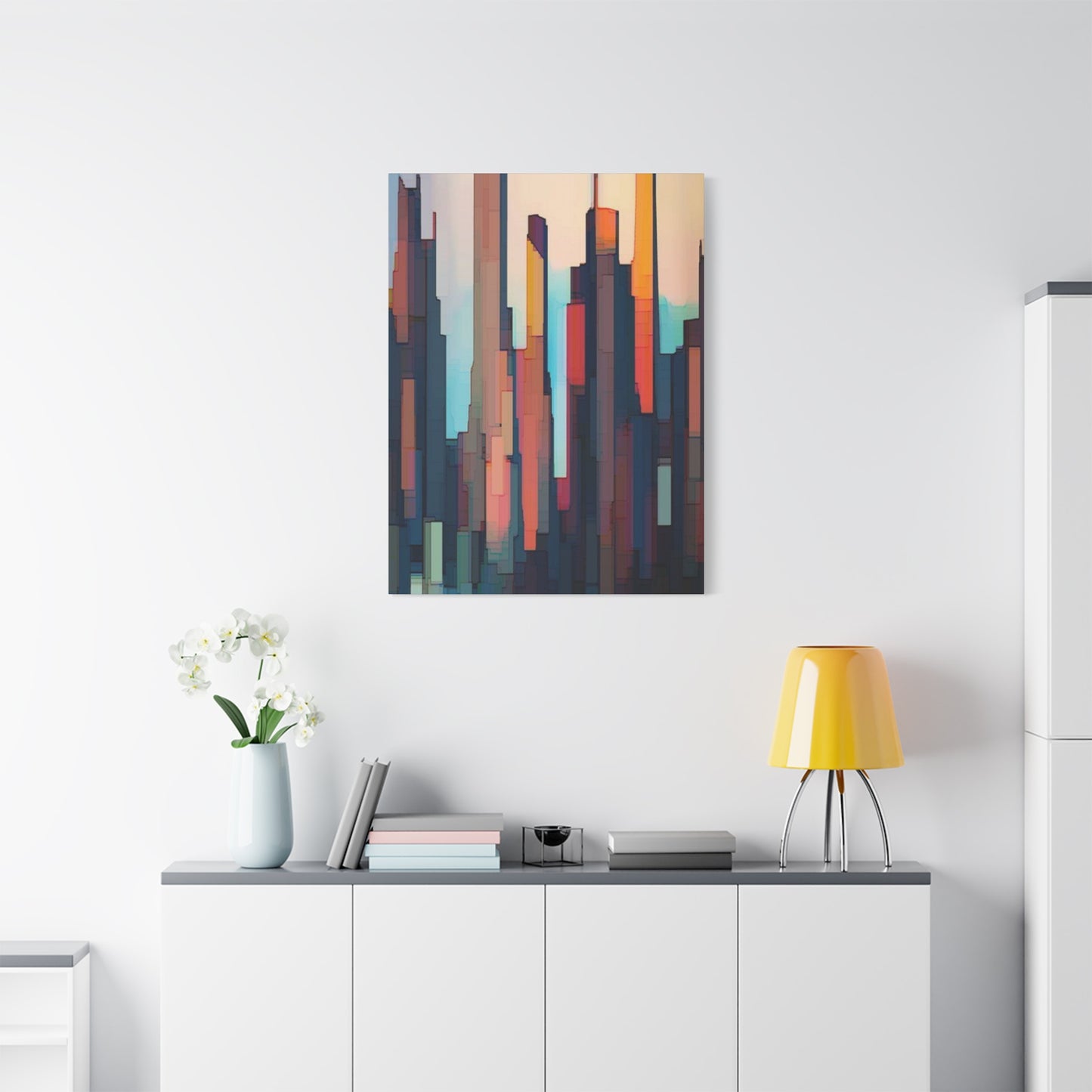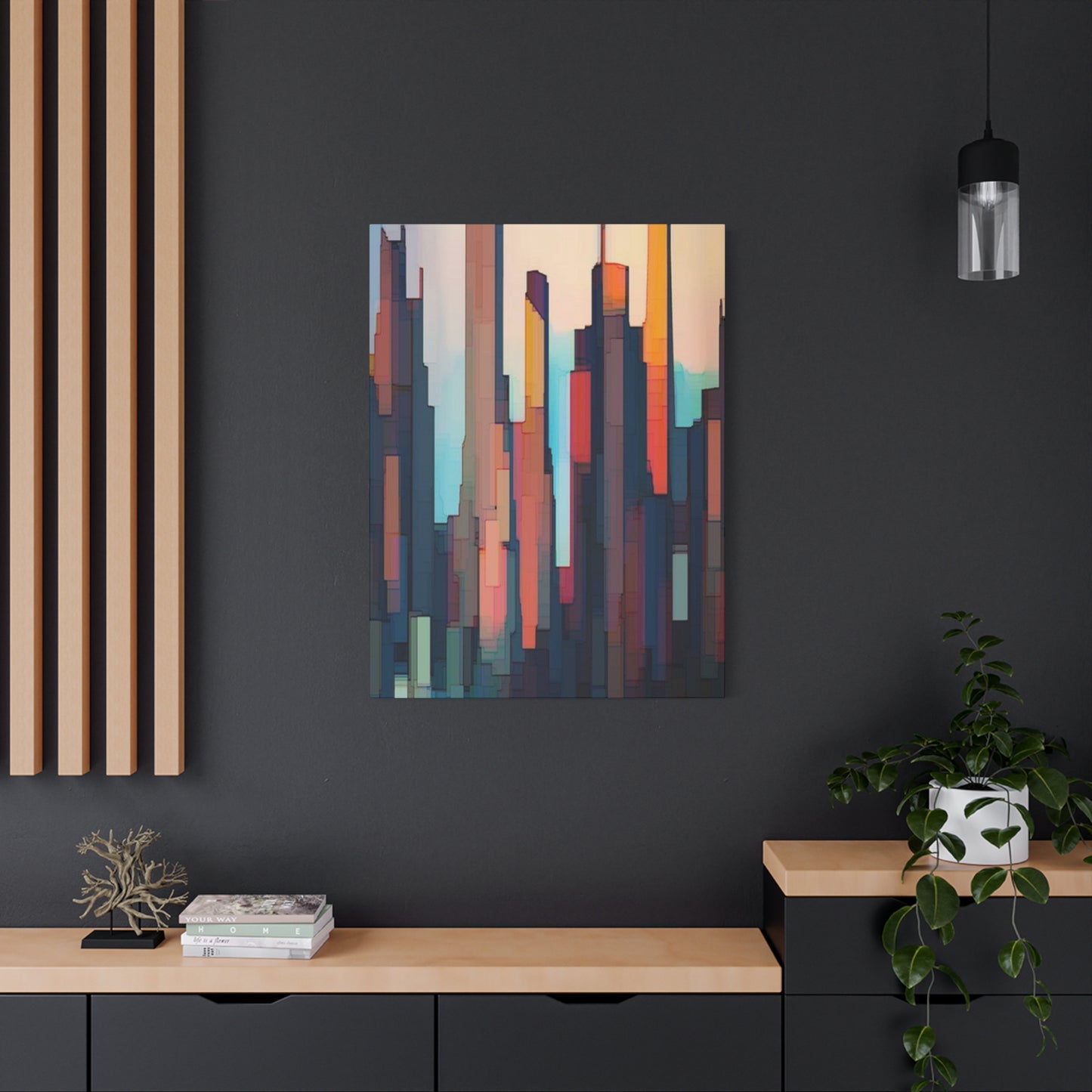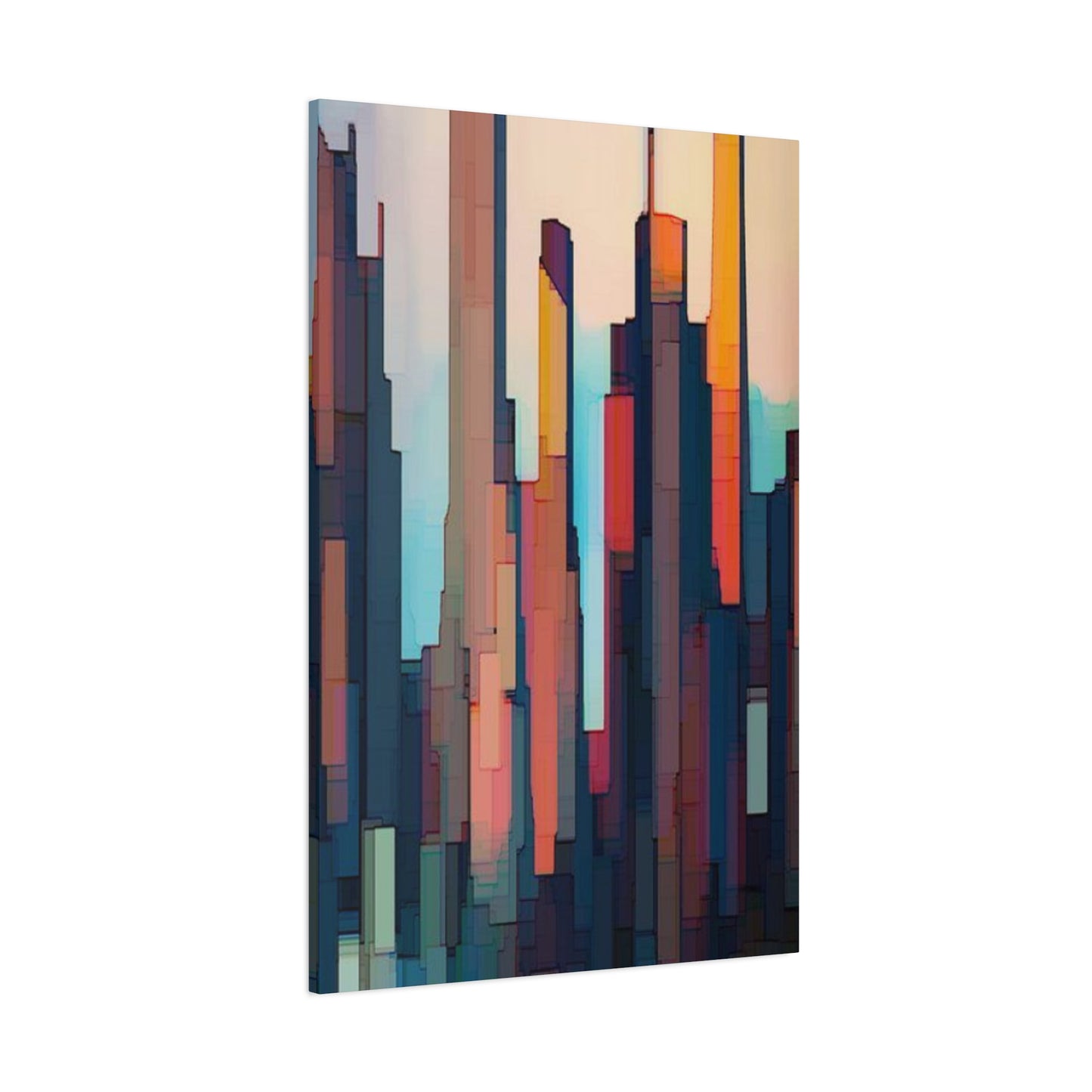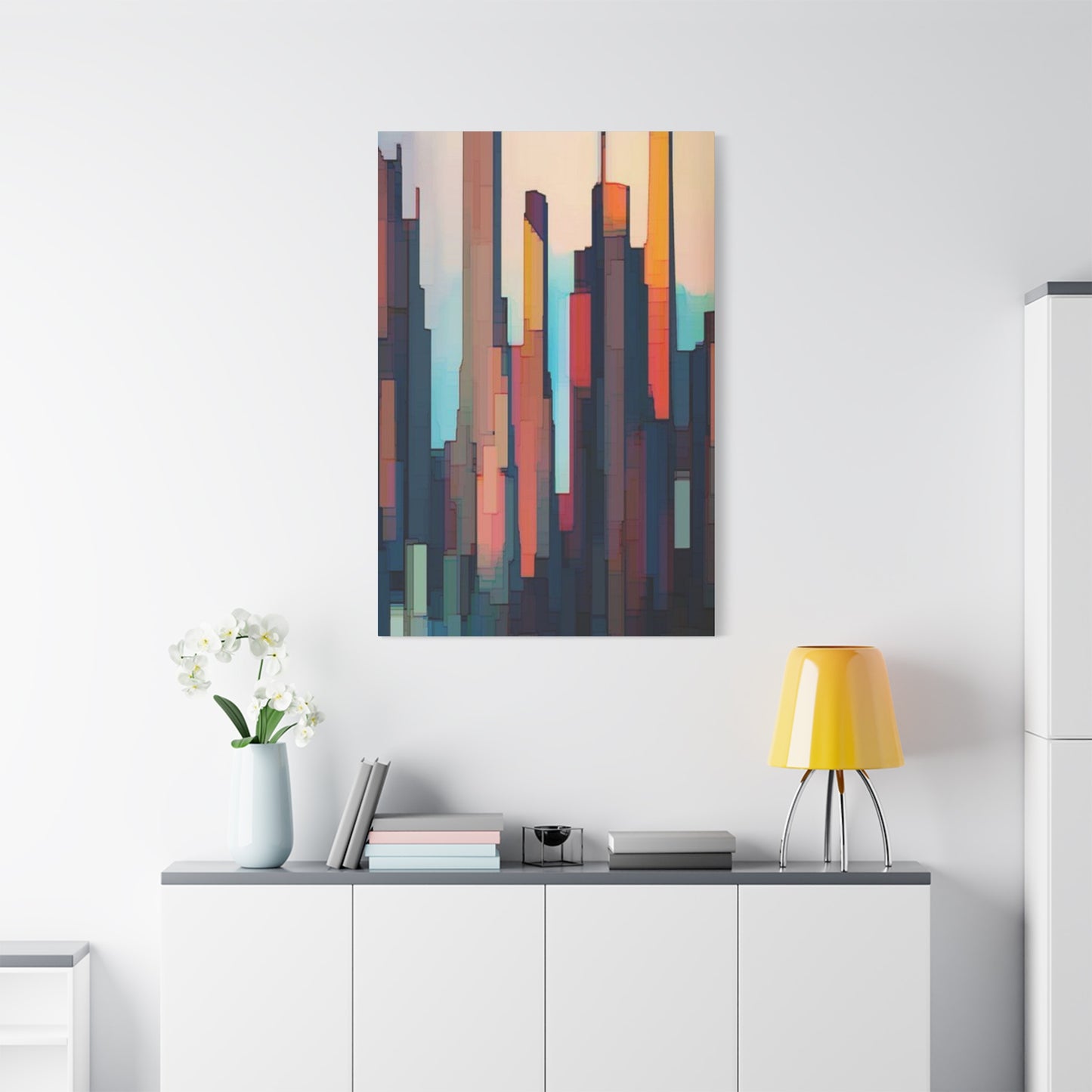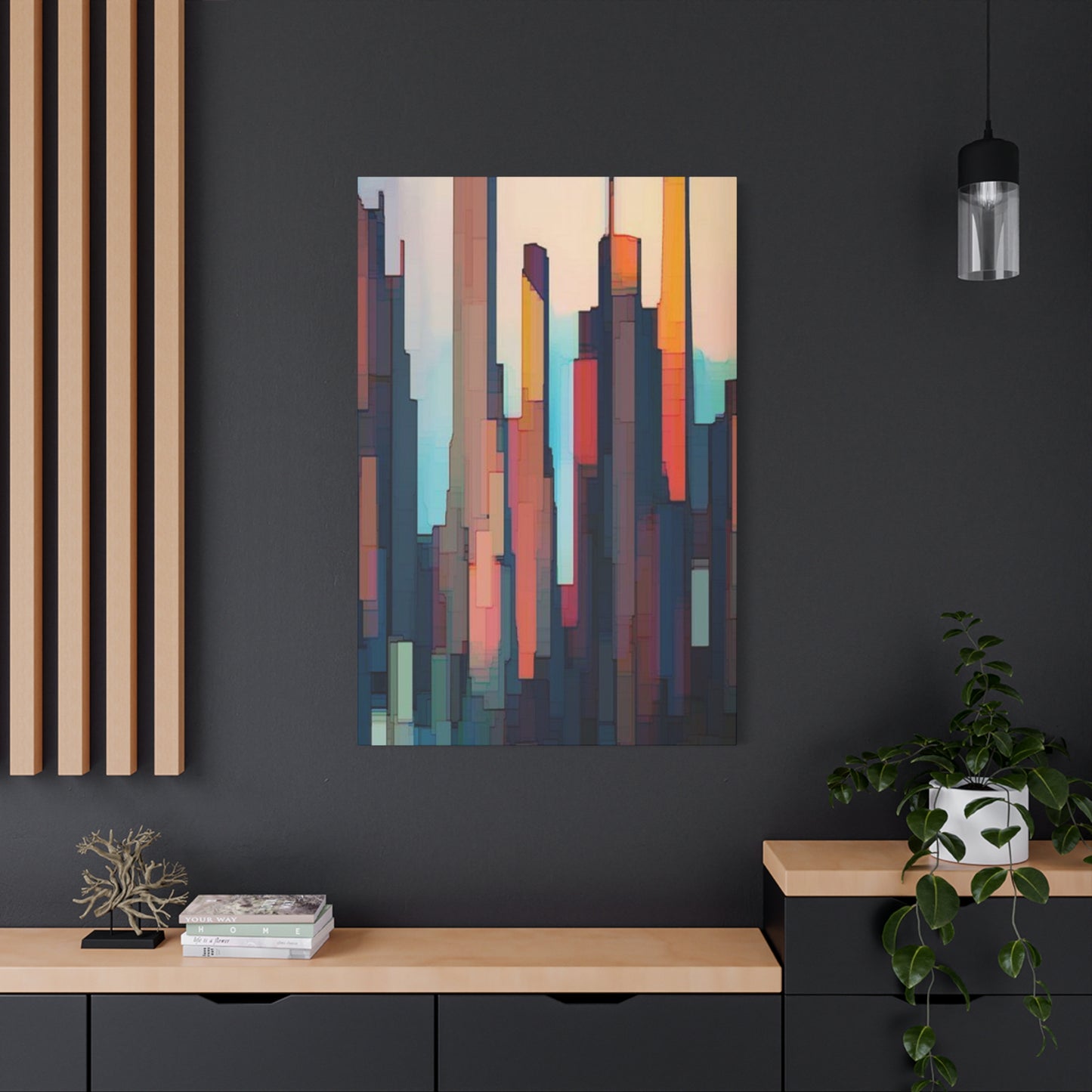Pairing Horizontal Lines Wall Art with Minimalist and Industrial Design
The world of contemporary décor has embraced the timeless elegance of horizontal line wall art as a cornerstone of modern aesthetic expression. These linear masterpieces represent more than mere decoration; they embody a philosophy of visual balance, tranquility, and sophisticated minimalism that resonates throughout today's design landscape. When we examine the profound impact of horizontal lines in artistic expression, we discover a fundamental element that speaks to our inherent desire for order, calm, and visual harmony within our living environments.
Horizontal line wall art captures the essence of horizon lines found in nature, evoking feelings of stability, peace, and infinite possibility. These artistic representations translate the natural world's most calming visual elements into contemporary home décor, creating environments that promote relaxation while maintaining sophisticated aesthetic appeal. The strategic placement and execution of horizontal line elements within wall art pieces serves as a powerful tool for establishing visual rhythm and creating cohesive design schemes that enhance any room's overall ambiance.
The growing popularity of this art form reflects society's increasing appreciation for clean, uncluttered design principles that prioritize quality over quantity. Horizontal line wall art represents the perfect intersection of artistic expression and functional design, offering viewers both visual interest and psychological comfort through its inherently calming linear structure. This comprehensive exploration will delve into every aspect of horizontal line wall art, from its theoretical foundations to practical applications in contemporary living environments.
Merging Linear Elements with Vibrant Color Palettes
The strategic combination of horizontal linear elements with bold, vibrant colors creates dynamic visual experiences that energize any environment while maintaining the calming influence of horizontal orientation. This artistic approach challenges traditional notions that horizontal lines must remain subdued or monochromatic, instead embracing the power of color to enhance linear compositions without overwhelming their inherent tranquility.
Contemporary artists have discovered that horizontal line wall art becomes exponentially more impactful when infused with carefully selected bold color combinations. The horizontal orientation provides a stable foundation that can support intense color relationships without creating visual chaos. Electric blues paired with warm oranges, deep purples contrasted with bright yellows, and rich emerald greens combined with coral tones demonstrate how horizontal lines can anchor bold color schemes while preventing them from becoming overwhelming or disorienting.
The psychological impact of combining horizontal lines with bold colors creates a unique emotional response that balances energy with stability. While bold colors naturally stimulate and energize viewers, the horizontal line structure provides a counterbalance that prevents overstimulation, creating artwork that feels both dynamic and peaceful. This delicate balance makes such pieces particularly effective in environments where both creativity and focus are desired, such as creative studios, modern offices, or contemporary living areas.
Color theory plays a crucial role in successful horizontal line compositions featuring bold hues. Artists must consider how different colors interact across horizontal bands, ensuring that transitions feel natural and harmonious rather than jarring or disconnected. Gradient effects within horizontal bands can create subtle transitions between bold colors, while maintaining distinct separation between different hues prevents muddy or confused visual messages.
The versatility of bold color combinations in horizontal line wall art allows for seasonal adaptations and mood-based selections. Warm color palettes featuring reds, oranges, and yellows create energizing environments perfect for social gatherings or creative work, while cool palettes incorporating blues, purples, and greens promote reflection and relaxation. The horizontal line structure provides consistency across different color schemes, allowing homeowners to change artwork seasonally without disrupting their overall design aesthetic.
Lighting considerations become particularly important when displaying horizontal line wall art featuring bold colors. Natural light can dramatically alter color perception throughout the day, creating an ever-changing visual experience as sunlight shifts and changes. Artificial lighting must be carefully selected to enhance rather than distort the intended color relationships, with LED systems offering the flexibility to adjust color temperature and intensity based on time of day or desired mood.
The scale of horizontal line wall art influences how bold colors are perceived and experienced. Large-scale pieces allow for more dramatic color transitions and broader color bands that can create immersive visual experiences, while smaller pieces might benefit from more concentrated color applications that create focused points of visual interest. Understanding these scale relationships helps artists and collectors select pieces that will achieve their desired visual impact.
Professional Presentation Techniques for Contemporary Linear Compositions
The presentation of horizontal line wall art requires careful consideration of framing techniques that enhance rather than compete with the linear composition's inherent visual flow. Modern framing approaches have evolved to complement contemporary linear artwork, with frameless presentation methods and minimalist framing solutions gaining popularity among designers and collectors who prioritize clean, uninterrupted visual experiences.
Contemporary framing philosophy for horizontal line wall art emphasizes the importance of maintaining visual continuity between the artwork and its surrounding environment. Traditional heavy frames can interrupt the flowing linear movement that defines horizontal line compositions, making sleek, minimalist framing solutions or completely frameless presentations more appropriate for most contemporary settings. Float mounting techniques create subtle shadow effects that add depth without disrupting the horizontal flow, while edge-to-edge presentations maximize visual impact.
The selection of frame materials significantly influences how horizontal line wall art integrates with existing décor elements. Natural wood frames can warm linear compositions while maintaining contemporary appeal, particularly when the wood grain runs parallel to the horizontal lines within the artwork. Metal frames offer industrial sophistication that complements modern architectural elements, with options ranging from brushed aluminum for subtle enhancement to bold black or white powder-coated finishes for more dramatic contrast.
Glass selection for framed horizontal line wall art requires consideration of both protection and visual clarity. Anti-reflective coatings minimize distracting reflections that can interrupt the viewer's connection with linear compositions, while UV-filtering properties protect artwork from fading over time. Museum-quality glazing provides optimal clarity and protection for valuable pieces, though the additional cost may not be necessary for all applications.
Matting decisions for horizontal line wall art should either complement the linear theme or remain completely neutral to avoid visual competition. When mats are used, they should maintain consistent proportions that echo the horizontal emphasis of the artwork itself. Wide horizontal mats can extend the linear theme beyond the artwork boundaries, while narrow uniform borders maintain focus on the artwork without creating visual distractions.
The mounting height for horizontal line wall art follows different principles than traditional artwork due to its unique visual characteristics. The horizontal emphasis naturally draws the eye across rather than up and down, making standard eye-level mounting less critical than ensuring the artwork aligns with architectural elements like chair rails, window frames, or furniture lines. This horizontal alignment creates visual harmony between artwork and architectural features.
Gallery lighting for horizontal line wall art benefits from wide-beam illumination that evenly lights the entire horizontal span rather than creating focused hotspots. Track lighting systems with adjustable beam angles allow for customized illumination that can be adjusted as artwork is changed or repositioned. The even distribution of light across horizontal compositions prevents shadows or bright spots that could interrupt the visual flow.
Conservation considerations for horizontal line wall art involve protecting linear compositions from environmental factors that could cause warping, fading, or other deterioration over time. Climate-controlled environments maintain stable temperature and humidity levels that prevent material expansion and contraction, while proper spacing from heating and cooling vents prevents direct exposure to temperature fluctuations that could damage artwork over time.
Enhancing Professional Environments with Linear Design Elements
The integration of horizontal line wall art into office and workspace environments creates sophisticated professional atmospheres that promote productivity while maintaining aesthetic appeal. Modern workplace design recognizes the significant impact that visual elements have on employee well-being, creativity, and overall job satisfaction, making the selection of appropriate artwork a crucial component of effective workspace planning.
Horizontal line wall art serves multiple functions in professional environments, providing visual interest that combats the sterile atmosphere often associated with corporate settings while maintaining the professional appearance necessary for business environments. The clean, linear aesthetic communicates organization, efficiency, and attention to detail – qualities that reflect positively on business operations and company culture. These visual messages can influence both employee behavior and client perceptions in subtle but meaningful ways.
The psychological benefits of horizontal line wall art in workplace environments extend beyond mere aesthetic enhancement. Research in environmental psychology demonstrates that horizontal lines promote feelings of calm, stability, and focused concentration – mental states that directly contribute to improved work performance. Unlike busy or chaotic artwork that might prove distracting in work environments, horizontal line compositions provide gentle visual stimulation that can help maintain alertness without overwhelming cognitive resources needed for complex tasks.
Conference rooms and meeting areas particularly benefit from carefully selected horizontal line wall art that creates professional atmospheres conducive to productive discussions. Large-scale horizontal compositions can serve as focal points that draw attention without creating distractions during presentations or important meetings. The calming influence of horizontal lines can help reduce tension during difficult negotiations or high-stakes business discussions, creating more collaborative and productive meeting environments.
Reception areas and client-facing locations benefit from horizontal line wall art that communicates professionalism while creating welcoming atmospheres for visitors. The sophisticated aesthetic of well-chosen linear compositions can enhance a company's professional image while providing conversational talking points that help put clients at ease. The versatility of horizontal line art allows for selections that complement corporate branding while maintaining broad appeal across diverse client demographics.
Private offices and individual workstations can be enhanced with smaller-scale horizontal line wall art pieces that provide personal inspiration and visual relief from computer screens and paperwork. The horizontal orientation works particularly well behind desks or along walls adjacent to workstations, creating visual flow that doesn't compete with necessary work materials or equipment. Personal selection of horizontal line art allows employees to express individual taste while maintaining professional workplace standards.
Open office environments present unique challenges for artwork integration, but horizontal line wall art offers solutions that work well in these contemporary workplace designs. Linear compositions can help define different work zones without creating physical barriers, using visual cues to establish separate areas for different types of work activities. The horizontal emphasis can also help counteract the vertical emphasis of cubicle walls and office furniture, creating more balanced visual environments.
Collaborative workspaces and creative areas benefit from horizontal line wall art that inspires innovation while maintaining focus on work objectives. Bold color combinations within horizontal compositions can energize creative thinking, while the structured linear format provides a stable visual foundation that prevents creative chaos from becoming overwhelming. This balance supports the kind of structured creativity that leads to practical innovations and successful project outcomes.
Developing Visual Depth Through Strategic Linear Arrangements
The creation of visual depth through horizontal line arrangements in wall art represents a sophisticated approach to two-dimensional artistic expression that challenges viewers' perceptions while maintaining the essential characteristics that make horizontal compositions so appealing. Artists and designers employ various techniques to suggest three-dimensional relationships within the confines of flat surfaces, creating artworks that engage viewers on multiple visual levels.
Layering techniques in horizontal line wall art involve the strategic overlapping of linear elements to suggest depth relationships and spatial hierarchy. Foreground lines might appear bold and sharply defined, while background elements fade in intensity or clarity, creating the illusion of atmospheric perspective that draws viewers into the composition. These layering effects can be achieved through color intensity variations, line weight differences, or opacity changes that suggest distance and spatial relationships.
Perspective applications in horizontal line compositions utilize the principles of linear perspective to create convincing depth illusions within predominantly horizontal frameworks. Vanishing point techniques can make horizontal lines appear to recede into the distance, creating expansive spatial sensations that make small rooms feel larger and confined areas feel more open. These perspective effects work particularly well in narrow hallways or compact living areas where physical expansion is impossible.
Color temperature gradients provide another powerful tool for creating depth in horizontal line wall art. Warm colors naturally appear to advance toward viewers, while cool colors recede into the background, allowing artists to create spatial relationships through strategic color placement. A composition might begin with warm yellows and oranges in the foreground, transitioning through neutral tones in the middle ground, and concluding with cool blues and purples that suggest infinite distance.
Textural variations within horizontal line compositions add tactile depth that engages multiple senses beyond purely visual perception. Smooth, polished foreground elements contrast with rough, matte background textures to create depth relationships that viewers can almost feel. These textural contrasts work particularly well in mixed-media horizontal line art where different materials contribute varying surface qualities to the overall composition.
Scale relationships between different horizontal elements within a single composition create depth through size perspective, where larger elements appear closer and smaller elements suggest distance. This technique allows for complex compositional relationships within horizontal frameworks, creating visual journeys that guide viewers' eyes across the artwork surface while suggesting three-dimensional spatial relationships.
Lighting effects painted or incorporated into horizontal line wall art can simulate natural depth relationships through the suggestion of illumination sources and shadow patterns. Simulated sunlight filtering through horizontal blinds, dawn light breaking across water surfaces, or artificial lighting creating horizontal shadow patterns all contribute to depth perception while maintaining the essential horizontal character of the composition.
Shadow and highlight relationships within horizontal line compositions create form and dimension that transform flat linear elements into sculptural-appearing forms. Strategic placement of light and dark areas can make horizontal lines appear to lift from the surface or recede into background areas, creating dimensional effects that engage viewers' depth perception mechanisms even within two-dimensional presentations.
Psychological Foundations of Linear Visual Elements
The psychological impact of horizontal lines in visual design stems from fundamental human perceptual mechanisms that have evolved over millions of years of interaction with natural environments. Understanding these deep-seated psychological responses helps explain why horizontal line wall art creates such powerful emotional and mental effects in contemporary living and working environments.
Evolutionary psychology suggests that human attraction to horizontal lines derives from our ancestral relationship with natural horizon lines that indicated safe, open landscapes free from immediate threats. These environmental cues triggered relaxation responses that helped our ancestors conserve energy when vigilance was unnecessary, creating positive associations with horizontal visual elements that persist in modern humans despite our dramatically changed living circumstances.
Neurological research has identified specific brain regions that respond to horizontal line orientations differently than vertical or diagonal elements. The visual cortex processes horizontal information through neural pathways that connect to areas of the brain associated with calm, peaceful emotional states, explaining why horizontal line wall art tends to create relaxing rather than stimulating environmental effects. These neurological responses occur automatically, below the threshold of conscious awareness.
Cultural associations with horizontal lines vary across different societies, but many cultures share positive connections between horizontal elements and concepts of stability, groundedness, and peaceful coexistence. These cultural meanings reinforce the biological responses to horizontal orientations, creating compound psychological effects that make horizontal line wall art particularly effective across diverse cultural backgrounds and personal aesthetic preferences.
Cognitive processing of horizontal line compositions requires less mental energy than complex or chaotic visual arrangements, making these artworks particularly suitable for environments where mental focus is important. The predictable, rhythmic nature of horizontal line arrangements allows the brain to process visual information efficiently, leaving more cognitive resources available for other tasks while still providing adequate visual stimulation to prevent boredom or sensory deprivation.
Stress reduction through horizontal line visual exposure has been documented in multiple research studies, with participants showing measurable decreases in cortisol levels and other stress indicators when exposed to horizontal line compositions compared to more chaotic visual arrangements. These physiological changes suggest that horizontal line wall art can contribute to improved health outcomes in both residential and workplace environments.
Meditation and mindfulness practices often incorporate horizontal line visualizations as tools for achieving calm, focused mental states, demonstrating the powerful psychological effects these visual elements can produce. The repetitive, rhythmic nature of horizontal line patterns can induce light meditative states that promote relaxation and mental clarity, making horizontal line wall art particularly valuable in environments designed for rest and rejuvenation.
Sleep quality improvements have been reported in bedrooms featuring horizontal line wall art, possibly due to the calming psychological effects that help prepare the mind for rest. The stable, peaceful visual messages communicated by horizontal lines may help counteract the stimulating effects of modern technology and busy lifestyles, creating bedroom environments more conducive to quality sleep and recovery.
Budget-Conscious Approaches to Contemporary Linear Art
The accessibility of modern horizontal line canvas prints has democratized contemporary art collection, making sophisticated linear compositions available to collectors with varying budget constraints. Mass production techniques and digital printing technologies have reduced the costs associated with high-quality horizontal line wall art without sacrificing visual impact or aesthetic sophistication.
Print-on-demand services have revolutionized access to horizontal line wall art by eliminating the need for large inventory investments and allowing for customized sizing options that fit specific budget and placement requirements. These services offer professional-quality canvas prints featuring horizontal line designs from emerging and established artists, often at fraction of the cost of original artworks while maintaining excellent visual quality and durability.
Digital art platforms have expanded the available selection of horizontal line designs by connecting consumers directly with artists worldwide, creating global marketplaces for affordable contemporary linear art. These platforms often offer various licensing arrangements that allow for personal printing of horizontal line designs, further reducing costs while supporting artistic creation and innovation in linear composition development.
DIY printing solutions have made it possible for art enthusiasts to create professional-looking horizontal line wall art using high-quality home printing equipment and appropriate materials. Large-format inkjet printers capable of producing museum-quality prints have become more affordable, while specialty papers and canvas materials designed for home printing provide excellent results for horizontal line compositions that emphasize color accuracy and sharp line definition.
Seasonal sales and promotional opportunities from online art retailers often feature significant discounts on horizontal line wall art, making it possible to acquire high-quality pieces at reduced prices. Timing purchases around major sales events can result in substantial savings without compromising on quality or selection, allowing budget-conscious collectors to build impressive horizontal line art collections over time.
Group buying arrangements and art subscription services have created new models for acquiring horizontal line wall art at reduced costs. These collaborative purchasing approaches leverage volume discounts to make high-quality contemporary linear art more accessible to individual consumers, while subscription services provide regular access to new horizontal line designs at predictable monthly costs.
Local artist collaborations and art student exhibitions often feature excellent horizontal line compositions at very reasonable prices, supporting emerging talent while acquiring unique pieces that won't be found in mass-market collections. These local connections can lead to commissioned horizontal line pieces that perfectly match specific décor requirements and personal preferences at costs comparable to mass-produced alternatives.
Framing cost management represents a significant opportunity for budget savings when displaying horizontal line wall art. Alternative framing solutions like magnetic mounting systems, clip frames, or DIY framing approaches can dramatically reduce presentation costs while maintaining professional appearance. The clean, linear nature of horizontal compositions often works well with minimalist presentation methods that cost less than traditional framing approaches.
Maximizing Visual Impact Through Scale and Placement
Large-scale horizontal line art functions as a powerful focal point that can transform entire room dynamics through commanding visual presence and sophisticated artistic statement. The strategic use of oversized horizontal line compositions creates dramatic design anchors that establish visual hierarchy while maintaining the calming characteristics inherent in horizontal linear arrangements.
Proportional relationships between horizontal line wall art and room dimensions require careful consideration to achieve optimal visual balance without overwhelming existing architectural features. Large-scale pieces work best in rooms with adequate wall area and appropriate ceiling heights, where their impressive dimensions can be fully appreciated without creating cramped or unbalanced visual relationships with surrounding elements.
Viewing distance calculations for large-scale horizontal line art help determine appropriate sizing for specific room configurations and intended use patterns. Pieces designed for close viewing in intimate settings might feature intricate linear details that reward careful examination, while artworks intended for appreciation from across large rooms might emphasize bold, simple linear relationships that maintain impact at greater distances.
Architectural integration of large horizontal line art requires consideration of existing structural elements like windows, doorways, and built-in features that could compete with or complement the linear composition. Successful integration often involves aligning horizontal elements within the artwork with existing architectural lines, creating visual harmony that makes both the art and architecture appear more intentional and sophisticated.
Multiple panel arrangements allow for even more dramatic horizontal line presentations that can span entire walls or create immersive environmental experiences. These multi-panel installations require careful planning to ensure proper alignment and visual flow between individual components, but can create stunning focal points that completely transform room atmospheres through comprehensive horizontal line themes.
Color coordination between large-scale horizontal line art and existing décor elements requires strategic planning to ensure that the dramatic presence of oversized artwork enhances rather than conflicts with established color schemes. The size of large pieces amplifies their color impact, making color selection particularly critical for successful integration into existing environments.
Lighting design for large-scale horizontal line art often requires specialized solutions that can evenly illuminate extensive horizontal spans without creating shadows or hotspots that interrupt visual flow. Track lighting systems, wall washers, or custom lighting solutions may be necessary to properly showcase large horizontal line compositions and maximize their visual impact.
Installation considerations for large horizontal line art include structural requirements for safely supporting substantial weight, particularly for canvas pieces with heavy frames or mounting systems. Professional installation may be necessary for very large pieces, while proper wall anchoring and support systems are essential for safe long-term display of impressive horizontal line artworks.
Integrating Multiple Geometric Forms with Linear Elements
The combination of horizontal lines with other geometric shapes creates sophisticated compositional relationships that expand the visual vocabulary of contemporary wall art while maintaining the essential character that makes horizontal elements so appealing. These hybrid compositions offer increased visual complexity without sacrificing the fundamental calm and balance associated with horizontal line arrangements.
Circular elements integrated with horizontal lines create dynamic tension between organic curves and structural linearity, resulting in compositions that feel both stable and energetic. The contrast between the infinite continuity of circles and the directional movement of horizontal lines generates visual interest that engages viewers without creating the chaos that might result from more complex geometric combinations.
Triangular shapes incorporated into horizontal line compositions can create focal points and directional emphasis that guide viewers' attention through the artwork while maintaining overall horizontal flow. The angular nature of triangles contrasts effectively with the smooth continuity of horizontal lines, creating compositional variety that prevents monotony while preserving essential linear characteristics.
Rectangular and square elements work particularly well with horizontal line compositions because they share similar geometric foundations and mathematical relationships. These combinations can create sophisticated grid-like arrangements that emphasize order and structure while allowing for creative variations in size, proportion, and color that maintain visual interest throughout extended viewing periods.
Organic shape integration with horizontal lines creates compelling contrasts between natural and artificial forms, often suggesting landscape elements like hills, clouds, or water features that enhance the natural associations already present in horizontal line compositions. These organic additions can soften rigid linear arrangements while maintaining the essential peaceful character that makes horizontal compositions so psychologically appealing.
Layering different geometric forms within horizontal line compositions creates depth and complexity that rewards careful viewing while maintaining the accessibility that makes horizontal line art suitable for diverse audiences. Strategic layering can suggest three-dimensional relationships and spatial hierarchies that transform flat compositions into suggestions of architectural or landscape environments.
Color relationships between different geometric elements within horizontal line compositions require careful consideration to maintain visual harmony while providing adequate contrast to distinguish different forms. Color theory principles help guide these decisions, ensuring that additions of other geometric shapes enhance rather than compete with the horizontal linear framework.
Scale relationships between horizontal lines and other geometric elements significantly influence the overall character and impact of mixed geometric compositions. Large geometric shapes can dominate horizontal line frameworks, while smaller elements might serve as accents or details that enrich linear compositions without disrupting their fundamental character and appeal.
Minimalist Applications for Contemporary Linear Compositions
Abstract horizontal line art represents the perfect marriage of minimalist design principles with sophisticated artistic expression, creating compositions that achieve maximum visual impact through careful reduction rather than excessive elaboration. These minimalist approaches to horizontal line wall art speak to contemporary preferences for clean, uncluttered aesthetic experiences that promote calm and focus in increasingly busy modern lives.
Negative area utilization in minimalist horizontal line compositions creates breathing room that allows linear elements to achieve their full visual potential without competition from unnecessary decorative details. Strategic use of white or neutral backgrounds emphasizes the essential character of horizontal lines while creating sophisticated relationships between positive and negative areas that demonstrate advanced compositional understanding.
Color palette limitation in abstract horizontal line art often involves restricting selections to two or three carefully chosen hues that work together harmoniously without creating visual confusion or overcomplication. These limited palettes can range from monochromatic schemes that emphasize texture and line quality to carefully selected contrasting colors that create drama through strategic color relationships rather than complex color harmonies.
Line weight variation provides visual interest in minimalist horizontal compositions without requiring additional colors or complex shapes that might compromise the essential simplicity that defines minimalist approaches. Varying the thickness or intensity of horizontal lines creates rhythm and emphasis that guides viewers' attention through compositions while maintaining the clean, uncluttered character that makes minimalist art so appealing.
Texture emphasis becomes particularly important in minimalist horizontal line art because reduced color palettes and simplified compositions place greater emphasis on surface qualities and material characteristics. Canvas texture, brushstroke evidence, or paper grain can provide subtle visual interest that enriches minimalist compositions without compromising their essential simplicity and clarity.
Asymmetrical balance in minimalist horizontal line compositions creates sophisticated visual relationships that feel natural and organic rather than rigid or mathematical. These carefully calculated imbalances prevent minimalist compositions from becoming sterile or boring while maintaining the essential calm and order that makes horizontal line art so psychologically beneficial.
Scale considerations for minimalist horizontal line art often favor either very large scales that create immersive experiences through simple elements, or smaller intimate scales that reward close viewing and contemplation. Medium scales can sometimes feel indecisive in minimalist compositions, making clear commitment to either dramatic or intimate presentations more effective.
Material selection for minimalist horizontal line art influences both visual and tactile qualities that contribute to overall aesthetic impact. High-quality papers, canvases, or other substrates become more important in minimalist compositions because there are fewer elements to distract from material qualities, making investment in premium materials particularly worthwhile for minimalist horizontal line pieces.
Creative Projects Inspired by Linear Design Principles
DIY approaches to creating horizontal line art offer opportunities for personal artistic expression while developing deeper appreciation for the design principles that make horizontal line compositions so visually and psychologically effective. These hands-on projects provide creative outlets that can result in custom artwork perfectly suited to specific décor requirements and personal aesthetic preferences.
Painting techniques for horizontal line art can range from simple brush applications to more sophisticated methods involving masking tape, rulers, and careful planning to achieve precise linear relationships. Acrylic paints work particularly well for DIY horizontal line projects because they dry quickly, provide good coverage, and maintain sharp edges when used with proper masking techniques that prevent color bleeding between different linear elements.
Collage applications using horizontal line principles can incorporate various materials like colored paper, fabric, or found materials arranged in horizontal patterns that create sophisticated compositions without requiring advanced painting or drawing skills. These mixed-media approaches can result in unique textural qualities that distinguish DIY horizontal line art from mass-produced alternatives while providing opportunities for personal creative expression.
Digital creation tools have made it possible for anyone with computer access to design and print custom horizontal line art using software ranging from simple drawing programs to sophisticated graphic design applications. These digital approaches allow for precise control over line spacing, colors, and proportions while enabling easy experimentation with different arrangements before committing to final compositions.
Photography projects inspired by horizontal line principles can involve capturing natural or architectural horizontal elements and transforming them through cropping, color adjustment, or digital manipulation into abstract horizontal line compositions. These photographic approaches can result in unique artworks that combine personal vision with the fundamental appeal of horizontal line arrangements.
Printmaking techniques like screen printing or linocut can be adapted for horizontal line compositions, creating multiple copies of custom designs while learning traditional artistic processes. These approaches often result in distinctive textural qualities and subtle variations between prints that add character and uniqueness to DIY horizontal line art projects.
Mixed media experimentation combining painting, collage, digital elements, or found materials can result in innovative horizontal line compositions that reflect personal creativity while maintaining the essential characteristics that make horizontal line art so appealing. These experimental approaches can lead to discoveries of new techniques or material combinations that create distinctive artistic signatures.
Collaboration projects involving family members or friends can make DIY horizontal line art creation into social activities that strengthen relationships while producing meaningful artwork for home environments. These collaborative approaches can incorporate different individuals' color preferences or artistic contributions while maintaining unified horizontal line themes that create cohesive final compositions.
Surface Quality and Material Considerations in Linear Art
The exploration of texture in horizontal line paintings reveals how surface qualities contribute significantly to the overall impact and appeal of linear compositions, extending the artistic vocabulary beyond simple color and line relationships into tactile dimensions that engage viewers on multiple sensory levels. Understanding these textural possibilities helps both artists and collectors appreciate the sophisticated material considerations that distinguish exceptional horizontal line art from merely decorative linear arrangements.
Canvas preparation techniques for horizontal line paintings influence both the immediate visual appearance and long-term durability of finished artworks. Properly prepared surfaces provide stable foundations for paint application while contributing subtle textural qualities that enhance the overall aesthetic impact. Different canvas weaves, from fine portrait canvases to coarse landscape preparations, interact differently with horizontal line applications and can significantly influence the final character of completed artworks.
Paint application methods in horizontal line compositions range from smooth, even applications that emphasize pure color and precise edge definition to more expressive techniques that incorporate brushstroke evidence and surface variation as integral compositional elements. These application choices dramatically influence how viewers perceive and respond to horizontal line artworks, making technique selection a crucial artistic decision that affects both immediate visual impact and long-term viewing satisfaction.
Layering techniques in textured horizontal line paintings can create complex surface relationships that reward close examination while maintaining the essential clarity that makes horizontal compositions so effective from viewing distances. Strategic layering allows artists to incorporate subtle color variations and surface complexity without compromising the clean linear relationships that define successful horizontal line compositions.
Medium additives and specialized paints designed for textural effects offer artists numerous possibilities for enhancing horizontal line paintings with sophisticated surface qualities. Sand additives, texture pastes, and specialty acrylic mediums can create everything from subtle surface variation to dramatic tactile effects that transform horizontal line compositions into sculptural-appearing artworks that engage multiple senses simultaneously.
Tool selection for creating textured horizontal line paintings extends beyond traditional brushes to include palette knives, sponges, combs, and custom tools designed to create specific surface effects. Each tool creates distinctive textural signatures that can enhance horizontal line compositions in different ways, from subtle surface variation to bold textural contrasts that add visual interest without disrupting essential linear characteristics.
Varnishing and protective coating decisions for textured horizontal line paintings must consider how surface treatments will interact with existing textural qualities while providing necessary protection for long-term preservation. Matte varnishes can preserve textural subtleties while providing protection, while gloss coatings might enhance color vibrancy at the cost of textural definition.
Conservation considerations for textured horizontal line paintings involve protecting complex surface qualities from environmental damage, handling wear, and cleaning challenges that might not affect smoother compositions. Understanding these conservation requirements helps collectors make informed decisions about acquisition, display, and maintenance of textured horizontal line artworks that will preserve their distinctive surface qualities over time.
Harmonizing Linear Art with Contemporary Furniture Design
The strategic use of horizontal lines in wall art to soften and complement modern furniture arrangements demonstrates the sophisticated interplay between two-dimensional artwork and three-dimensional environmental elements. This design approach recognizes that successful room composition requires careful consideration of how different visual elements interact to create cohesive, harmonious living environments that feel both sophisticated and comfortable.
Furniture scale relationships with horizontal line art require careful consideration of proportional balance to ensure that neither element dominates or disappears in relation to the other. Large, imposing furniture pieces might require substantial horizontal line artworks to maintain visual balance, while delicate or minimal furniture arrangements might work better with more subtle linear compositions that complement rather than compete with furniture elements.
Color coordination between horizontal line wall art and furniture upholstery, wood tones, or metal finishes creates opportunities for sophisticated design relationships that enhance both elements while maintaining overall environmental harmony. These color relationships can range from complementary contrasts that create dynamic visual interest to analogous harmonies that promote calm, unified atmospheric effects.
Style compatibility between contemporary furniture design and horizontal line art generally works well because both elements often share similar design philosophies emphasizing clean lines, geometric relationships, and minimal ornamentation. However, successful combinations require attention to specific stylistic details that ensure compatibility rather than competition between different design elements within single environments.
Placement considerations for horizontal line art in relation to furniture arrangements often involve creating visual relationships that enhance furniture layouts while providing appropriate viewing opportunities for artwork appreciation. Horizontal line art positioned above seating areas can create intimate viewing experiences, while pieces placed across from seating arrangements might function as focal points for room composition.
Lighting coordination between furniture arrangements and horizontal line art requires consideration of how furniture placement affects both natural and artificial lighting patterns that illuminate artwork. Tall furniture pieces might create shadows that interfere with artwork visibility, while reflective furniture surfaces might create glare or unwanted reflections that detract from horizontal line composition appreciation.
Textural relationships between furniture materials and horizontal line art surfaces can create sophisticated sensory experiences that engage multiple senses while maintaining visual harmony. Smooth, polished furniture surfaces might contrast effectively with textured horizontal line paintings, while rough, natural furniture materials might work better with smoother artwork surfaces to prevent sensory overload.
Seasonal arrangement flexibility allows for changes in both furniture positioning and horizontal line art placement to accommodate different seasonal needs, lighting conditions, or social requirements without requiring complete room redesigns. Understanding these flexible arrangement principles helps homeowners maximize their investment in both furniture and artwork over time.
Monochromatic Excellence in Linear Design
The powerful aesthetic impact of horizontal lines in black and white wall art demonstrates how sophisticated visual effects can be achieved through masterful use of contrast, composition, and tonal relationships without relying on color complexity or chromatic manipulation. These monochromatic approaches often create more dramatic and lasting visual impressions than complex color compositions while maintaining the essential calm and balance associated with horizontal line arrangements.
Contrast management in black and white horizontal line compositions requires sophisticated understanding of tonal relationships and visual weight distribution to create compelling artwork without the benefit of color differentiation. Strategic use of pure black, pure white, and various gray tones creates visual hierarchy and compositional structure that guides viewers' attention through artwork while maintaining essential horizontal flow characteristics.
Photographic approaches to black and white horizontal line art can incorporate natural phenomena like cloud formations, water surfaces, or architectural elements translated through careful cropping, contrast adjustment, and tonal manipulation into abstract linear compositions. These photographic foundations provide organic authenticity that enhances the natural associations inherent in horizontal line arrangements while demonstrating sophisticated artistic vision.
Printing considerations for black and white horizontal line art involve understanding how different papers, inks, and printing processes affect contrast, detail resolution, and overall tonal range. High-quality black and white reproductions require attention to these technical details to ensure that subtle tonal variations and sharp line definitions translate effectively from original artworks to printed reproductions.
Historical references in black and white horizontal line art connect contemporary compositions to established traditions in graphic arts, photography, and minimalist painting that have explored monochromatic expression for decades. Understanding these historical connections provides context for appreciating contemporary black and white horizontal line art while recognizing its place within broader artistic traditions.
Lighting design for black and white horizontal line art becomes particularly critical because monochromatic compositions rely entirely on contrast and tonal relationships that can be dramatically affected by lighting quality, intensity, and direction. Proper lighting enhances tonal subtleties and maintains sharp contrast relationships that define successful black and white horizontal line compositions.
Framing considerations for black and white horizontal line art often favor neutral or minimal framing solutions that don't compete with the stark simplicity of monochromatic compositions. White, black, or natural wood frames typically work well, while colorful or ornate framing might distract from the sophisticated simplicity that makes black and white horizontal line art so compelling.
Environmental compatibility of black and white horizontal line art makes these pieces particularly versatile for diverse décor situations where color coordination might be challenging or where long-term flexibility is desired. The neutral nature of monochromatic horizontal line art allows for easy integration with changing décor schemes while maintaining sophisticated artistic presence.
Dynamic Visual Flow Through Linear Movement
The creation of movement and flow through horizontal line arrangements in wall art represents a sophisticated understanding of how static visual elements can suggest dynamic energy and directional motion without literal representation of moving objects. This approach to horizontal line composition creates visual experiences that feel alive and engaging while maintaining the fundamental stability that makes horizontal arrangements so psychologically comfortable.
Rhythm establishment in horizontal line compositions utilizes repetition, variation, and spacing relationships to create visual beats that guide viewers' eyes across artwork surfaces in predictable yet interesting patterns. These rhythmic relationships can suggest everything from gentle ocean waves to musical intervals, creating emotional resonance that extends beyond purely visual appreciation into synesthetic experiences that engage multiple sensory memories.
Directional emphasis within horizontal line arrangements can create subtle suggestions of movement from left to right, right to left, or bidirectional flow that creates visual tension and resolution within static compositions. These directional suggestions can be achieved through color gradients, line weight variations, or compositional arrangements that create visual momentum without disrupting essential horizontal character.
Eye movement patterns created by strategic horizontal line arrangements can be designed to encourage specific viewing behaviors that enhance artwork appreciation and extend viewer engagement. Understanding how viewers typically scan horizontal compositions allows artists to place visual emphasis and create viewing experiences that feel natural and satisfying while maximizing artistic impact.
Conclusion
Modern horizontal line wall art exemplifies how simplicity and precision can combine to create striking contemporary visual harmony. Through the deliberate use of clean, linear elements arranged horizontally, this style of wall art fosters a sense of balance, calm, and structure within any living or working environment. The understated elegance of horizontal lines draws the eye across the space, emphasizing openness and flow, which is central to modern design principles.
The beauty of horizontal line art lies in its minimalism and versatility. By using varying thicknesses, spacing, and textures, artists can craft pieces that range from subtle and soothing to bold and dynamic. This adaptability allows horizontal line art to complement a variety of interior aesthetics, whether it be sleek urban lofts, minimalist homes, or eclectic spaces seeking a grounding focal point. The linear designs often evoke feelings of stability and continuity, making them ideal for areas where a sense of order and calm is desired, such as offices, living rooms, or bedrooms.
In addition to their aesthetic appeal, horizontal line artworks contribute to the spatial perception of a room. Their orientation can visually widen a narrow space or bring balance to larger walls, enhancing the overall architecture of the interior. These pieces serve as more than just decoration; they become tools for shaping the ambiance and flow of the environment.
Moreover, modern horizontal line wall art invites contemplation and appreciation of simplicity, encouraging viewers to find beauty in form and repetition. The subtle rhythms created by these lines evoke a meditative quality, turning walls into canvases of quiet sophistication. This artistic approach aligns perfectly with contemporary trends that prioritize intentional design and thoughtful minimalism.
In conclusion, modern horizontal line wall art is a powerful expression of contemporary design’s emphasis on harmony, balance, and simplicity. Through the use of linear design elements arranged horizontally, this art form enhances spaces with understated elegance and visual coherence. Whether used as a statement piece or as part of a broader gallery, horizontal line art offers a timeless and versatile way to elevate interiors with modern grace and thoughtful structure.

















